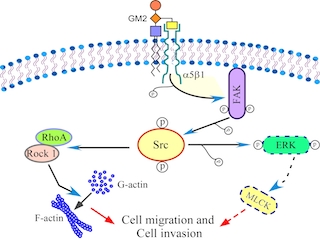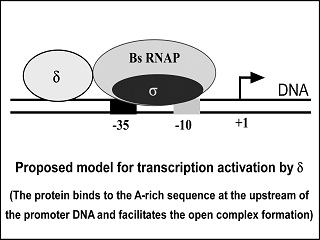
1. Rasool, B., Zargar, I. A., Hussain, N., & Mukherjee, D. (2023). Pd-catalyzed synthesis of hetero 1, 2-interlinked C-disaccharides by coupling of iodo glycals with glycals. Chemical Communications, 59(59), 9090-9093.
Month Year : August - 2024





Related: Media / Press corner
Mathematical modelling and experiments demonstrate that mycobacteriophages can kill mycobacteria by non-lytic mechanisms. The information derived could lead to the development of new drugs for the treatment of TB

Mycobacteriophages infect and grow in mycobacterium species, several of which happen to be dangerous pathogens – the best known example being Mycobacterium tuberculosis that causes the deadly disease tuberculosis. Eliminating tuberculosis through prevailing antibiotic-based strategies has had restricted success, due to the rise of drug-resistant strains. Phage therapy for tuberculosis is an interesting possibility. Sujoy Das Gupta (Microbiology) and Soumen Roy (Physics) are currently investigating the mechanism by which these phages interact with their mycobacterial hosts, thereby killing them. Using D29, as a model mycobacteriophage, they have found that in addition to lysis, this phage can induce cell death through an alternative mechanism involving production of superoxide radicals. By obtaining more insight into this intriguing phenomenon, they eventually hope to unravel novel metabolic pathways that can be targeted for drug development against tuberculosis. This work was also selected by the editors of AEM spotlight.
Reference: Samaddar S et al, Dynamics of mycobacteriophage-mycobacterial host interaction: Evidence for secondary mechanisms for host Lethality. Applied and Environmental Microbiology [ASM], 82, 124-133 (2016)
A new approach towards information retrieval from dynamic multidimensional images using complex networks developed. The method can be used for non-invasive diagnosis of dry eye disease

Soumen Roy presented a fresh and broad yet simple method of information retrieval from videos by converting them to time series and thence to networks. His lab used thermal imaging videos collected by collaborators at Calcutta University from patients at Calcutta Medical College. The mean pixel intensities from every frame of the imaged videos were collated into time series, which were then converted into networks. Using network measures they could successfully distinguish between dry eye patients and healthy individuals.
This approach is completely new in medical diagnostics, particularly in eye research. The findings are important because their technique is fast and non-invasive (requires no physical contact with affected organs). They also showed that their approach compares well to sophisticated image processing algorithms, which are much harder to implement at the level of real-time electronic devices. The technique can be applied to many other videos and might help in designing smart devices. A patent has also been filed by TIFAC (DST).
Reference: Banerjee SJ et al, Using complex networks towards information retrieval and diagnostics in multidimensional imaging. Scientific Reports [Nature], 5, 17271 (2015)
Mechanism of ganglioside GM2 mediated migration of tumor cells - a pivotal role of the integrin receptor

The definitive role of ganglioside GM2 in mediating tumor-induced growth and progression is still unknown. Kaushik Biswas recently reported a novel role of ganglioside GM2 in mediating tumor cell migration and uncovered its mechanism. They established the functional role of ganglioside GM2 by a multidirectional approach, using either silencing or over-expression of GM2-synthase, the key enzyme that controls GM2 biosynthesis. The mechanism of GM2-mediated tumor cell migration was elucidated using gene expression profiling as well as conventional biochemical techniques, which confirmed a role of integrin signaling and its downstream partners in the process. Finally, confocal microscopy suggested co-localization while co-immunoprecipitation and surface plasmon resonance confirmed direct interaction of membrane bound GM2 with the integrin receptor. Thus over-expression of select gangliosides (GM2) in tumors result in enhanced interaction with membrane bound integrin-1 causing activation of the downstream signaling leading to rearrangement of the actin cytoskeleton resulting in enhanced migration in tumor cells.
Reference: Kundu M et al, Mechanism of ganglioside GM2 mediated migration of tumor cells - a pivotal role of the integrin receptor. Biochimica et Biophysica Acta (BBA) - Molecular Cell Research [Elsevier], 1863, 1472-89 (2016)
Key molecular regulators of early blight disease response in tomato have been revealed



